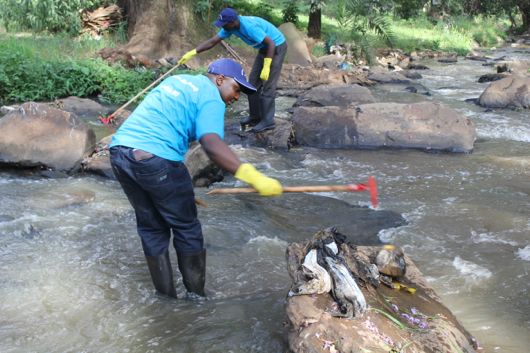People who love safari are always seeking new adventures, and they are willing to go to great lengths to experience nature’s best shows. Even so, you cannot call yourself a true safari enthusiast if you do not have Africa’s Great Migration on your bucket list. Many spend years wishing to experience this phenomenon, but once they get to do it, they are left in awe.
What is the Great Migration?
To summarize, the Great Migration is an event that takes place all year long. It is when almost two million wildebeest, antelopes, zebras, and many others, along with their young, start to migrate from Serengeti National Park in Tanzania to Kenya’s Maasai Mara National Reserve. As you may have already guessed, this is a quest for food, and the animals travel 1800 miles to greener pastures.
The event is long and exciting, but at the same time, it is raw and brutal. It is estimated that close to 250 thousand animals die during the migration. Apparently, the animals are in the greatest danger when they need to cross rivers. There is the Grumeti River in Tanzania, as well as the Mara River in Kenya. The waters are filled with crocodiles, and the currents are just as unforgiving. However, as cruel as it may sound, the scenes depict some of nature’s most dramatic scenes.
When does it start?
The timing is not always the same. However, between December and March, the herds start to gather in northern Tanzania. This is also the calving season, so if you choose to watch the start of the migration, you are in for cute baby zebras, gazelles, and all kinds of calves. At the same time, predators are lurking because they sense the weakest links, and you may even witness some killing. Yes, it is brutal, but that is nature. Also, seeing lions, wild dogs, hyenas, and leopards in action is a beautiful thing. They are all majestic creatures, and witnessing their speed and strategy is something you will never be able to forget.
From April to May, the herds start to move west and north. It is an incredible image to see thousands of animals going in the same direction. However, you may have some difficulties in witnessing the beginning of the migration due to heavy seasonal rain. Some small camps are closed.
If you want to witness the Great Migration, June is the best month for you. All the individual smaller herds come together and form one massive sea of animals. It is also the mating season for the wildebeest so you will be getting a real treat. In July, you get to experience the herd’s first major obstacle. The Grumeti River. Depending on how much it rained, the water can get very deep. Some wildebeest will drown, and the lurking crocodiles will also give you a show. The scenes are not for the faint-hearted, and you need to prepare yourself to appreciate nature in its raw existence.
Getting to Kenya
In August, the plains of Serengeti are turning Yellow, so the animals turn north to Kenya. After they cross the Grumeti River, they will go to Kenya’s Mara Triangle and Lamai Wedge. However, there is a river crossing there as well. This time, it is the Mara River, and it is just as filled with hungry crocodiles as the Grumeti River. Some animals will not survive, but most of them will get to Mara plains. In September and November, the Mara fields are filled with animals, and the best places to watch them is from Mara Serena Safari Lodge and Governors Camp. Of course, you can choose others if you like.
In December, the rains start in the south, and the animals will begin their travel back to Serengeti. There, they will have their young, and they will get ready to come back to Kenya when the time is right.
Tips on how to best experience Africa’s Great Migration
The first thing you need to do is find one of the best travel operators you can find. It is best to spend some extra cash and make sure that you will experience the best of Great Migration, rather than saving and getting to see none. You must also choose a camp, but there are plenty all across the route. Everything from travel butlers to expeditions needs to be researched so that you know you will have the experience of a lifetime.
At the same time, you should take care of the proper documentation. Passports and visas are a must. However, Kenya issues electronic visas. You can get one online. As for the passport, that is easy to obtain. You can get the photos online as well. If you already have some of the required documents, make sure that they are still valid.
The Great Migration is not only for safari enthusiasts. If you like nature and appreciate all its beauties, Africa’s Great Migration is a must on your bucket list. You will experience all kinds of states. Excitement, sadness (when a calf gets eaten by a leopard, the scenes are pretty dramatic,) you will get tired, hot, and everything that derives from all of that. However, the scenes will stay with you forever. That is not something you will forget anytime soon. Who knows? Maybe you will do it again and experience it from another spot? After all, you cannot spend an entire year chasing two million animals, can you?


